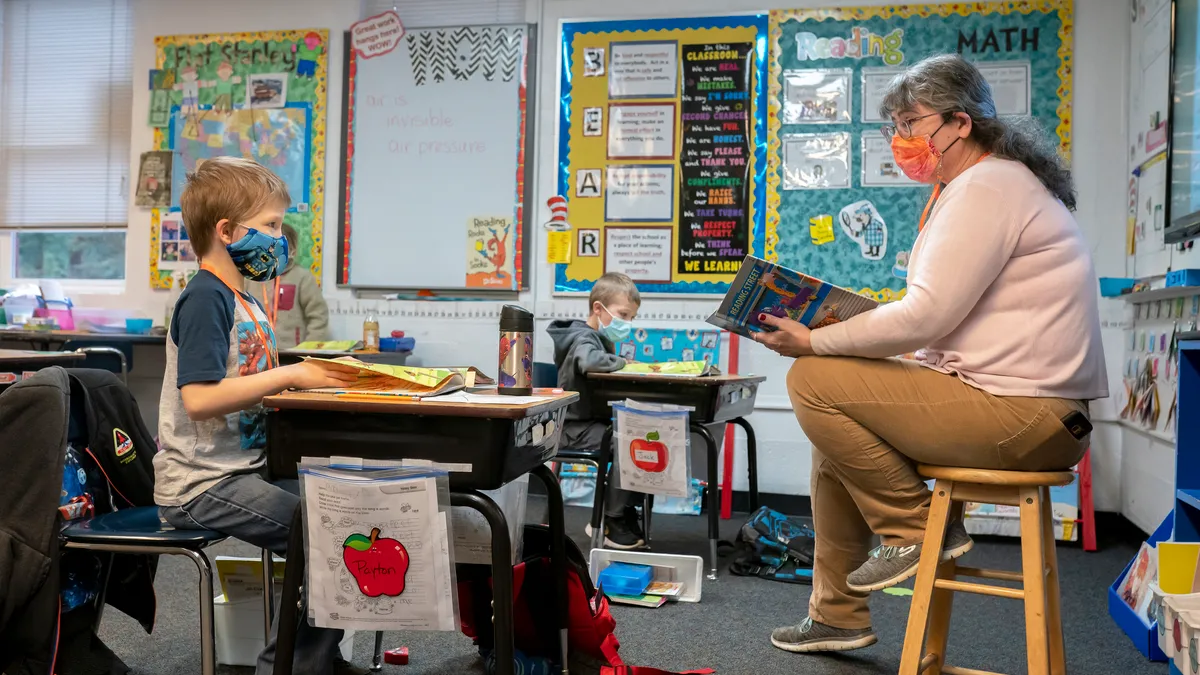Dive Brief:
-
High-quality tutoring programs should focus on students’ strengths, not weaknesses, and should include strong social-emotional supports, recommended participants in a Tuesday webinar hosted by the Learning Policy Institute and AASA, The School Superintendents Association.
-
Done well, high-impact tutoring can help individual students accelerate their learning and increase their engagement with school, said Susanna Loeb, director of the Annenberg Institute at Brown University and a panelist. But designed poorly, tutoring can be ineffective, she said.
-
As momentum grows to build high-quality tutoring opportunities into the school day, and as more federal stimulus funding for student learning becomes available, districts should consider tutoring initiatives, Loeb said. “This may be the best opportunity we'll have to get this proven intervention built into schools for the long run, to provide all students in need with the high-impact tutoring to supplement their classroom work,” she said.
Dive Insight:
The Long Beach Unified School District in California has used the Reading Recovery tutoring program for elementary school students for three decades. As its success grew, the district developed a Reading Recovery Training Center and implemented an intensive intervention model to expand the impact of Reading Recovery supports, said Superintendent Jill Baker.
The district plans to use Title I and stimulus funding to continue to support these programs, Baker said. “It's high-dose tutoring that we know at full implementation is successful for our students.”
There are certain elements that help make tutoring effective, according to Loeb and the National Student Support Accelerator. They include:
-
Equity, safety and cohesion. Tutoring programs should ensure students who need the support most have access to it. Additionally, students should feel safe when participating in tutoring sessions and that their data is protected. A well-run tutoring program also is designed for organizational alignment and shared goals.
-
The tutors. Although teachers are proven to be particularly effective tutors, others who have appropriate content knowledge can be just as effective. Tutors should also be able to develop positive relationships with students and know how to engage them in learning.
-
Instruction. The amount of instruction and materials used matters. Tutoring works best when it’s consistent and frequent, such as several times a week for at least a semester. Tutors also need quality instructional materials, and, in the best case scenarios, tutors can use and build on the school’s curricular materials.
-
Learning integration. Tutoring can be most effective if sessions are included as part of the school day or directly before or after the school day. “Primarily, this integration with schools is important because these programs have higher attendance, and importantly for equity, they're able to reach the students who need tutoring the most,” Loeb said.
When tutoring is part of the school day, tutors and teachers also have more opportunities to share information, and students are more likely to see their tutors as part of the larger school experience, Loeb said. -
Data. Tutors can use data to tailor instruction for individual students. Performance data can come from the school or from the tutor's own formative assessments that help track a student’s progress.
Michael Griffith, a senior researcher and policy analyst at LPI, advised school systems to consider braiding and blending stimulus funding with local and state money to enhance learning recovery efforts. Be prepared to be flexible, but also think about how to appropriately spend funds for long-term investments, he recommended.













